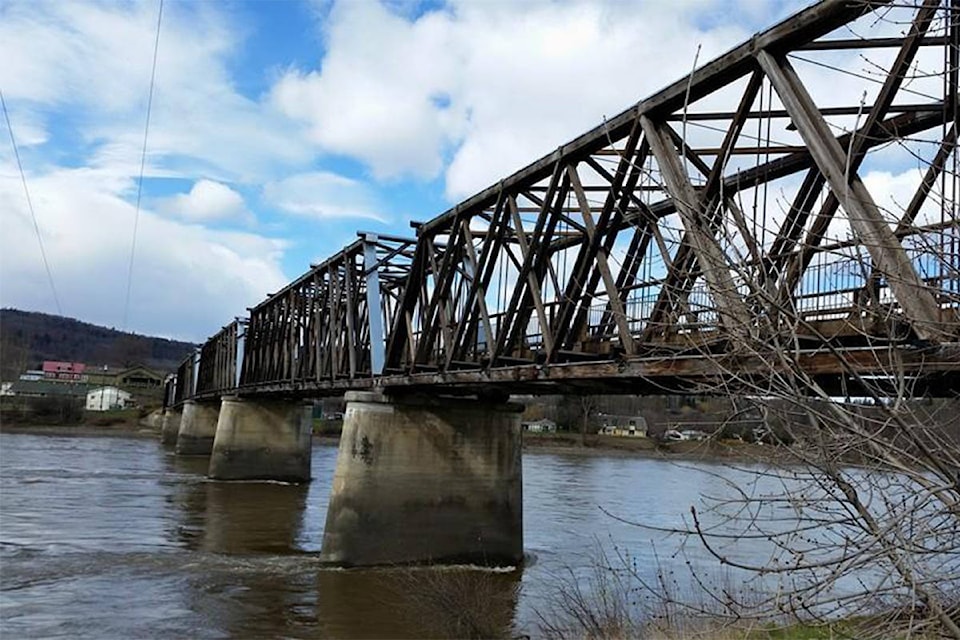Editor,
The first time I saw the wooden bridge in Quesnel I found it necessary to read the history of the structure. At the time the river was at minimum flow levels and legend claims that cattle were once driven across and through the river prior to its construction. This leads me to suspect the river being extremely wide but can’t be very deep.
The length of the piers supporting the bridge clearly indicated that rebar wasn’t used to build the piers, as they conform to the Masons rule which says put the weight in the middle third of the brick. Not following this rule will leave the ends of your pier, column, or wall susceptible to tensile loading. (Not good.) Making the length of the piers somewhat greater than the width of the bridge takes care of this problem. I also noticed the piers sit on bedrock. Piers that sit on a gravel bottom must be much longer at the bottom than the top on the upstream side to prevent a phenomenon known as scouring. This is what happens when a swift current is able to wash away the gravel under the leading edge of the peer. Over time, this can cause the structure to fail. After nearly a 90 years of high spring water flows and floods the bridge is still intact.
I suspect the timbers for the bridge were supplied locally during a time when our lumber was not priced by world markets. These timbers were lifted and swung into place by steam cranes guided by men not wearing a fall arrest harness or life jacket. I have not found any record of fatalities on the bridge during its construction.
According to the early pioneers, it took more than 20 years to convince politicians in faraway Victoria to find the money to build the bridge. This timing was fortunate as after two years of construction the bridge was completed just in time for the start of the depression. Had money for the bridge not been found by when it had, construction would have had to wait until after the depression and World War II.
The bridge is made up of five spans and holds the title of being the longest wooden span bridge in creativity. The spans on each end of the bridge are approximately 160 feet in length while the three center spans measure about 180 feet. There is a sign on the bridge warning pedestrians not to jump off, as I suspect doing so is certain suicide. The water under the bridge may be only three feet in depth or less, and being a strong swimmer is not going to help you with this.
Seeing the bridge at night is a treat for the eyes as it is lit with multi-coloured lights which were added during a recent restoration period. No man-made structure in the Caribou has the eye appeal of the Quesnel River Walking bridge.
Ted Bosman
Quesnel, B.C.
